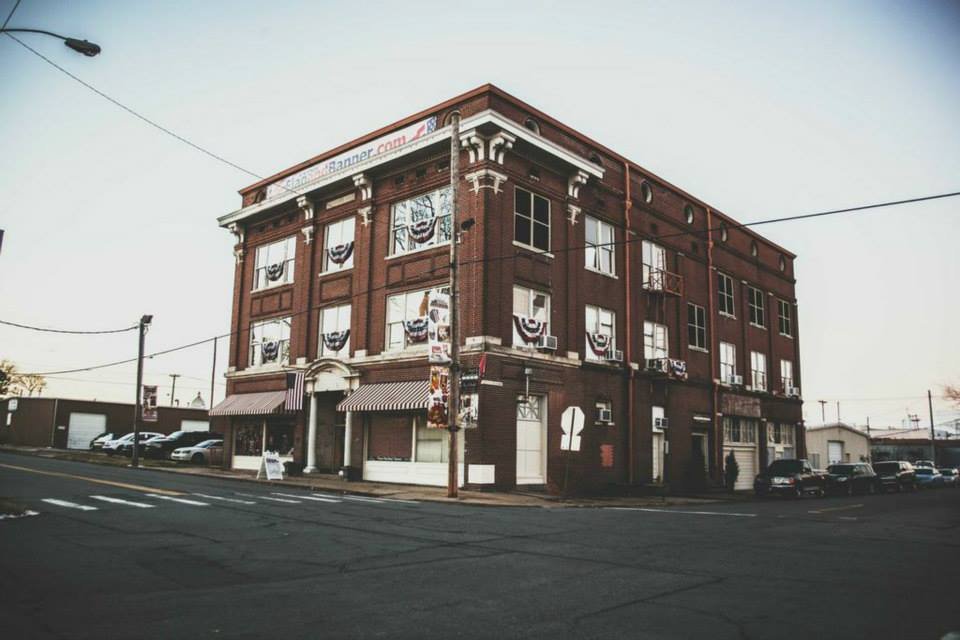History of Taborian Hall-An African American Achievement
In 1916, the fraternal organization The Order of Twelve, the Knights and Daughters of Tabor, began building the Taborian Hall to serve as their international headquarters. The building was entirely funded and erected by the black community in Arkansas.
Taborian’s spacious design made it an invaluable multi-use building on 9th Street. In addition to the headquarters for the Tabors, it offered room for community organizing, entertainment, retail businesses, and professional office space. As one of the two largest buildings on 9th Street, Taborian was hugely significant in the functionality and growth of the African American commercial district in the early 20th century. The street became known as ‘The Line,’ filled with Black owned businesses and professionals.
The Effect of the Great Depression
The Great Depression put a financial strain on the residents and business owners on and around 9th Street. Regular dues to the Knights of Tabor dropped considerably and the organization was forced to relinquish many of their assets, including Taborian Hall. During the 1930s and early ‘40s, the building’s ownership is hard to track. Businesses still ran in Taborian, but we do not see the buildings ownership unified again until World War II.
WWII brings Soldiers to Ninth Street
In 1942, America was fully entrenched in the war effort and young officers were training at Camp Robinson in North Little Rock, many of whom were African American. Segregation laws mandated that when they left their camp, they patronized specific business in restricted areas. For many, that meant crossing the Arkansas River to 9th Street in downtown Little Rock. Ninth Street had a reputation as an entertainment district, making it more enticing than the other black district, North Little Rock’s Washington Ave. At the height of the war, Camp Robinson supported tens of thousands of trainees at any given time and the nightly influx of these young men to 9th Street was both beneficial and stressful to the locals of ‘The Line.’
To help contain this flood of soldiers, the Ninth Street United States Officers Club was opened in Taborian Hall in January of 1942 and was an instant hit.
“The USO Club is located in the New Dreamland,” the State Press reported, “and occupies five rooms of the second floor, including the Lounge which is used for the Soldier’s Lounge and for small parties. Other rooms are used as game rooms, reading rooms, and offices, etc.”
The End of an Era
After the end of WWII, the USO sold Taborian Hall. From this point on, it does not seem to have a singular owner. The building’s title became muddier and muddier. Many businesses, professionals, and private clubs operated out of the building. Sharper W. Tucker owned several businesses on 9th Street. His promotion company, Tucker’s Promotions, operated out of Taborian for years. After his death in 1948, management continued under his partner until 1960. Private clubs like the Bronze League and the Twin City Club occupied the building from the 1950s through the late ‘70s. Gem’s Pharmacy operated out of the southeast corner of the building from the late 1920s to the 1960s. Many lawyers, dentists, and doctors held offices on the second floor throughout Taborian most active years. The last tenant in Taborian is the Twin City Club, vacating the basement in about 1979.
A New Beginning
In 1982, the building is put on the National Register of Historic Places with its sister building, Mosaic Templars. Kerry McCoy bought Taborian in 1991 for her business. Presently the building houses the Dreamland Ballroom on its third floor and the offices and facilities for Kerry McCoy Enterprises including FlagandBanner.com, OurCornerMarket.com, Brave Magazine and Up In Your Business Radio Show.
Keep Dreaming,
Matthew McCoy






